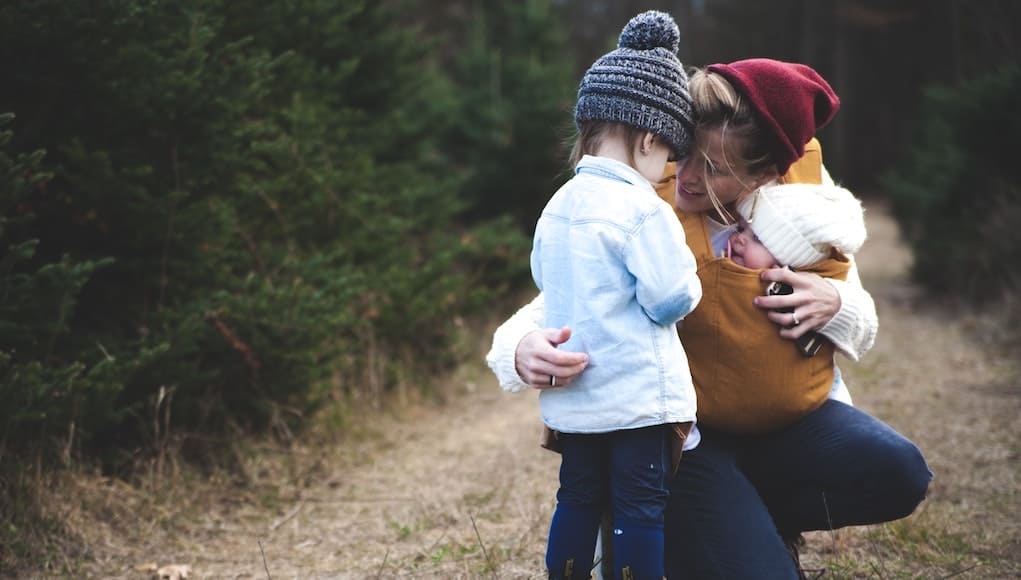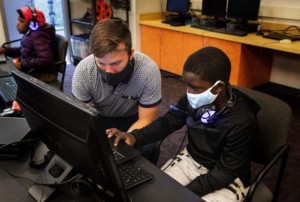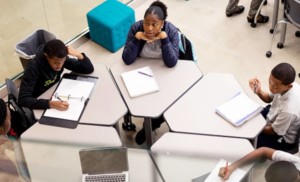Extending Social Emotional Learning into the Home

As our understanding of human development expands, and the innovation economy demands new kinds of literacies for success, schools and districts are expanding their curricula to include the education of the whole child. Districts are seeking ways to create learning environments for students that help them excel as global citizens, think creatively and collaboratively, and reflect on situations and make iterative adjustments as needed. Schools are recognizing that students who are self-aware and able to understand their own emotions are more socially adept and have a greater ability to relate to others. These students are responsible decision makers, both academically and socially. Students with a strong social-emotional skill set are primed for greater academic success.
SEL in the Classroom
In an effort to accomplish these goals, districts are prioritizing social and emotional learning throughout the school day. The Collaborative for Academic, Social, and Emotional Learning (CASEL) explains that social-emotional learning can happen within schools and classrooms in a variety of ways. SEL skills can be taught explicitly by the teacher through direct instruction and role-playing. Instructional strategies, such as cooperative learning, can be used within the classroom to promote the development of social-emotional skills. SEL can be integrated with the existing academic curricula in literacy, math, and social studies. Finally, schools can work to create a climate and culture focused on social-emotional learning as a wrap-around support of all that is happening within classrooms.
SEL instruction, at its best, is a live, dynamic curriculum, growing and changing in response to students’ needs. While there is value in the explicit teaching of SEL skills, for SEL instruction to be most successful, it must also be embedded within a school day in a way that feels natural and purposeful. Students, for example, might discuss and role play active participation during group work immediately before they begin working in collaborative groups.
SEL in the Home
Though the addition of social-emotional learning to the standard set of curricula offerings has marked benefits for developing the whole child, social-emotional skills cannot be learned in the vacuum of school alone. In schools, students are usually grouped with peers of the same age and similar ability levels. There is a baseline expectation of a common set of school rules. There is often a safety net of teacher intervention that creates artificial constraints on social interactions. Overall, there are a limited set of experiences that the school can use to anchor social-emotional instruction.
Extending this kind of learning into the home broadens the array of real-world experiences for students to learn and practice social-emotional skills. Engaging families as partners in that learning can also add greater meaning and relevance to the lessons happening at school. Social-emotional learning outside of school can be dynamic and responsive, growing and changing depending on what EACH child needs. Furthermore, extending SEL conversations into the home allows for instruction that is mutually reinforcing with what is happening in the classroom.
SEL in the home means that families can use moments that happen organically to grow students’ SEL skills. Trips to the grocery store, playing a board game, responding to a family experience, opportunities to meet new and different people while out and about, and other experiences that happen every day add breadth and depth to social-emotional learning instruction and practice. In short, homes and their surrounding communities are ripe with opportunities for social-emotional learning growth. This type of highly personalized learning allows families to utilize students’ strengths as SEL superpowers and fill in gaps that emerge in everyday life, empowering students to independently apply these lessons as needed.
To extend social-emotional learning into the home, families can:
Create avenues for learning. Use family experiences as springboards for conversations. When visiting a park with your family, watch and observe your child. How does your child meet new friends? How do they respond when they’re frustrated? How do they share or take turns? Notice what your child does well, and find something they need to refine. Make a mental note of specific moments and even take a few pictures. Use these to help your child reflect on their own social-emotional skills and growth over time.
Books are another platform for conversations around social-emotional learning. While there are a plethora of books about specific SEL topics, the books you already have in your home contain examples of friendship, conflict, and dialogue. These books can serve as visual models for social experiences. Talk about the characters and what is happening in the story to give your child access to the words and language used to describe different feelings.
Anticipate and preview experiences. Talk aloud about what a particular experience might be like to build your child’s ability to recognize their own feelings and develop their own methods to prepare for a situation.
Listen. When your child has a tough moment, create a space to listen. Listening is a simple and easy way to validate the feelings that kids experience, regardless of the size of the problem.
Reflect. As things happen in the world around you—whether it be a relatively insignificant moment at a sports game or something that makes national headlines—engage your child in conversations that help them identify problems and design solutions. When kids work through the problem-solving process with you, they grow their ability to think critically on their own.
Self-talk. When you’re feeling frustrated in the grocery store checkout line and take a deep breath to keep your cool, invite your child into your world by using self-talk. Say, “We are in a hurry, and this line is not moving very fast. I am feeling frustrated, so I’m going to take a deep breath.” This quick exchange teaches your child words to associate with their feelings as well as strategies like taking deep breaths. SEL does not need to be complex to be effective. The words you use will become your child’s inner monologue when they’re faced with similar situations.
Personalize your conversations. Your family’s background and experiences will inform how you talk with your child about their world. The more you personalize conversations about social-emotional learning, the more relevant that learning becomes.
Build up your child. Social-emotional learning is about helping your child learn and apply the skills and understanding needed to manage their feelings. When your child is struggling with something new, remind them of a time they worked hard to overcome obstacles. By shining a light on your child’s past successes, their path forward is a bit clearer.
Join forces. Connect with others, and don’t hesitate to access tools available to you. There is no right or wrong way to partner with your child as they develop social and emotional skills. Add to your parenting toolkit with resources such as:
- Parachute: a user-friendly, research-backed parenting app that provides easy access to solutions for common parenting challenges
- Mind Yeti: a mindfulness app with guided sessions that help kids destress, focus, get along with others, and relax
- Confident Parents, Confident Kids: a site with parent and child resources that support social-emotional development
- Parent Toolkit: a site with information and articles about all aspects of child development
Empowering Families
Bringing social-emotional learning into the home adds personalization and relevance for children. It gives students real-world opportunities to plan, problem-solve, and reflect as they grow their social-emotional skills. It strengthens relationships among family members, encouraging regular and ongoing conversations between parent and child. Bringing social-emotional learning into the home empowers families to use life’s moments, both good and bad, as ways to help their child grow. With that in mind, parents can reframe the messiness of everyday life as a series of opportunities for real-life, in-the-moment, social-emotional dialogue with their child.
For more, see:
- Social Emotional Learning and the Future of Education
- How To Get Students Talking About Their Own Social-Emotional Learning
- Getting Classroom Culture Right with Practical SEL
Stay in-the-know with all things edtech and innovations in learning by signing up to receive our weekly newsletter, Smart Update.






Mr. Parker
School Psych creating daily social emotional lessons and songs. Daily episodes and this week is all about coping skills. https://www.youtube.com/watch?v=PpY-n9QkS-s&t=11s